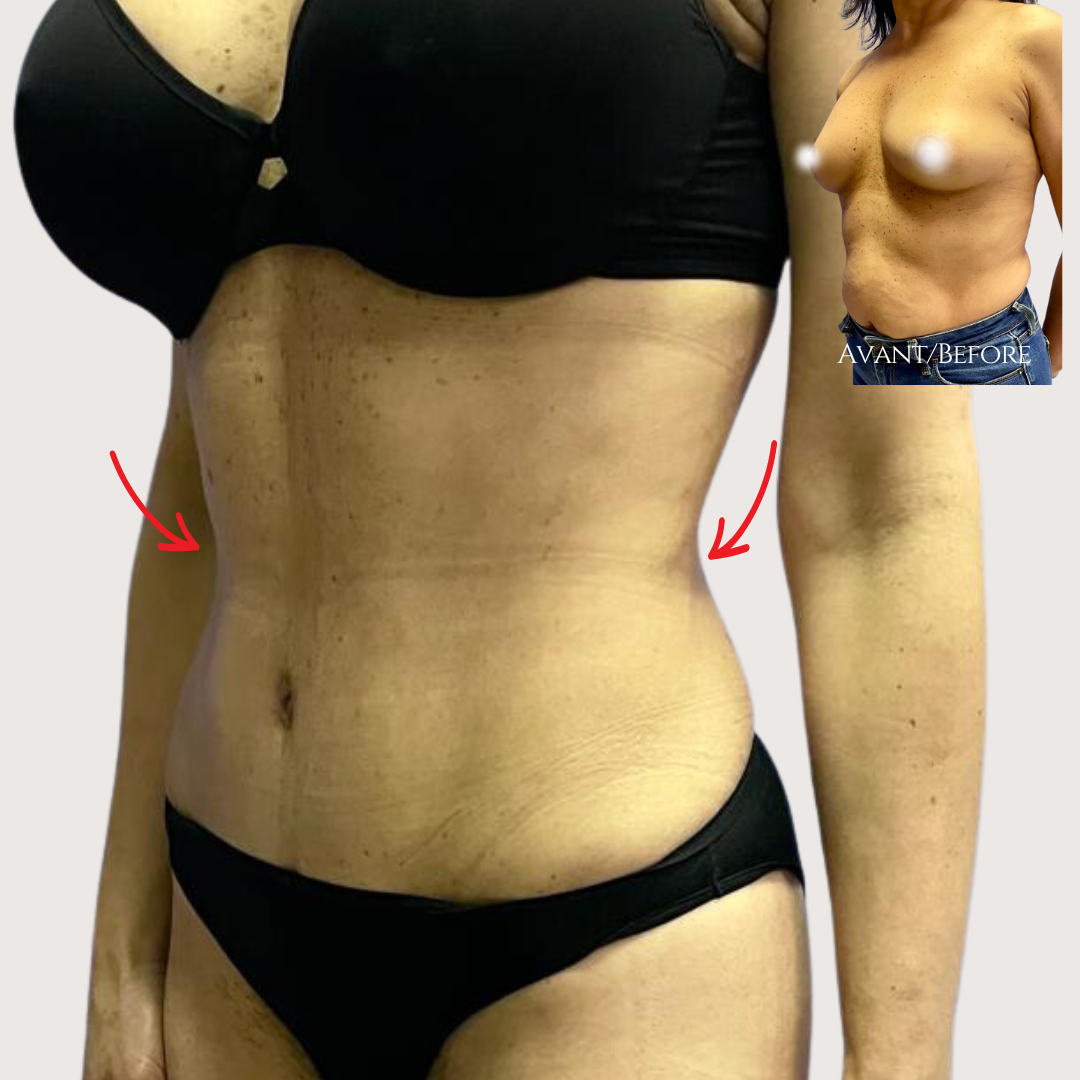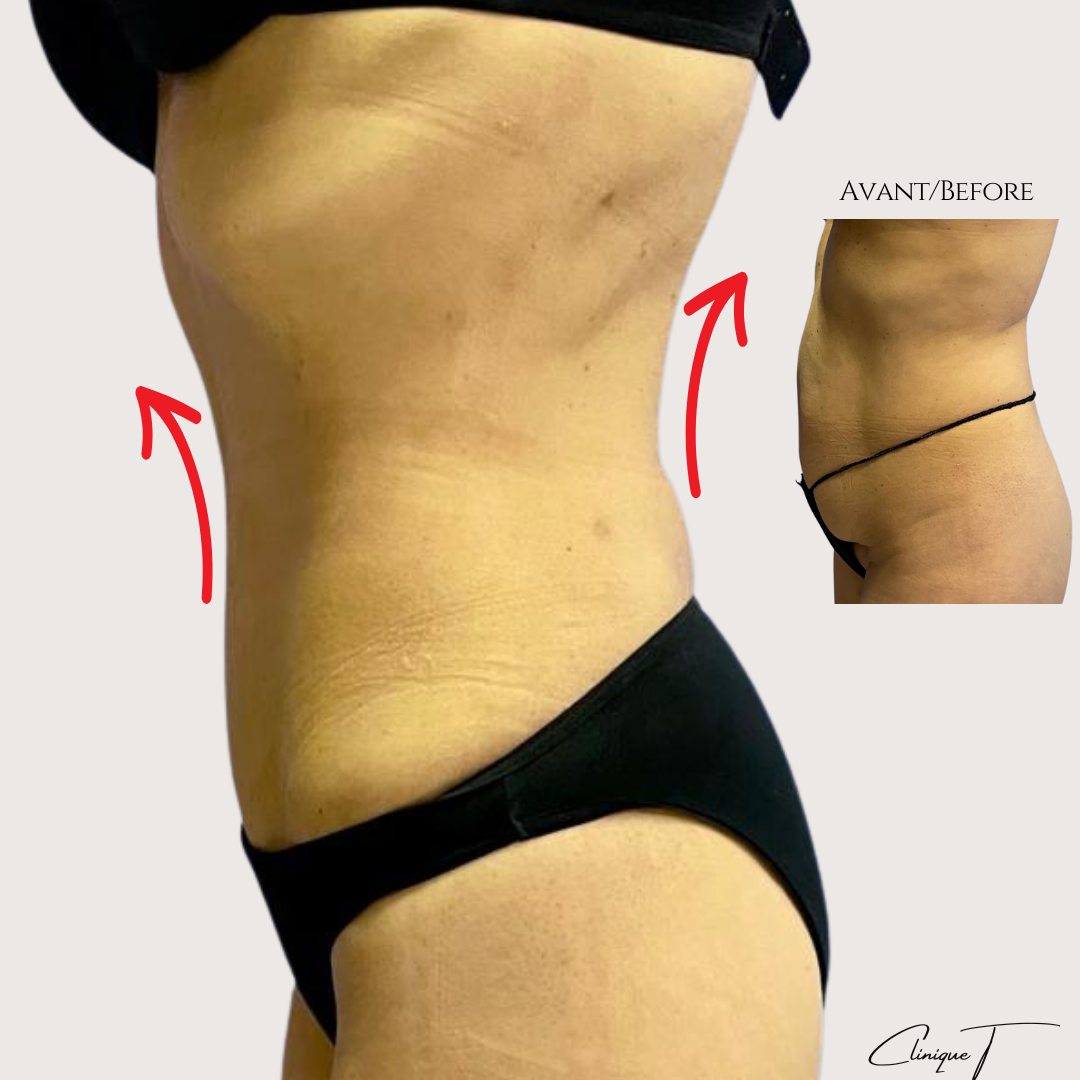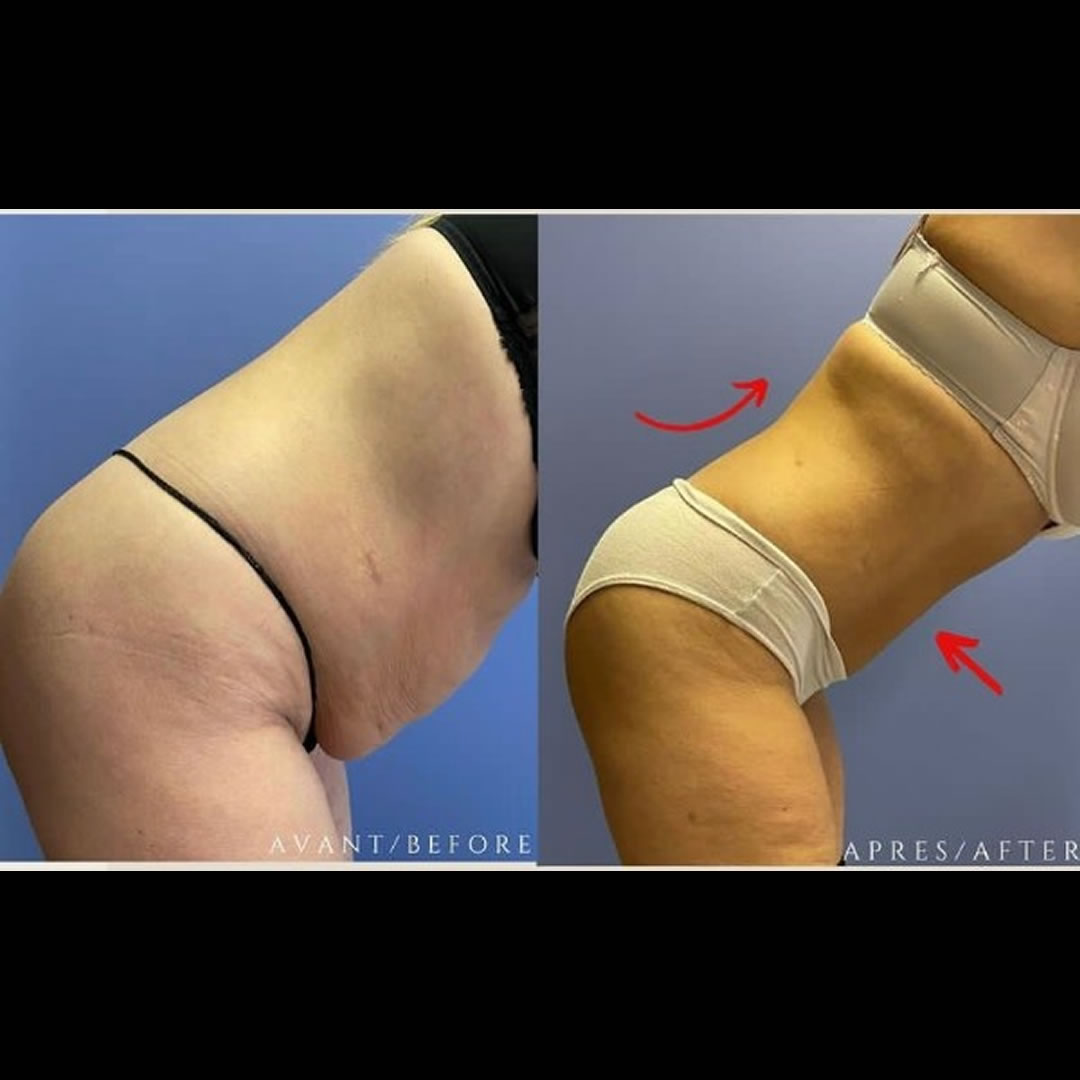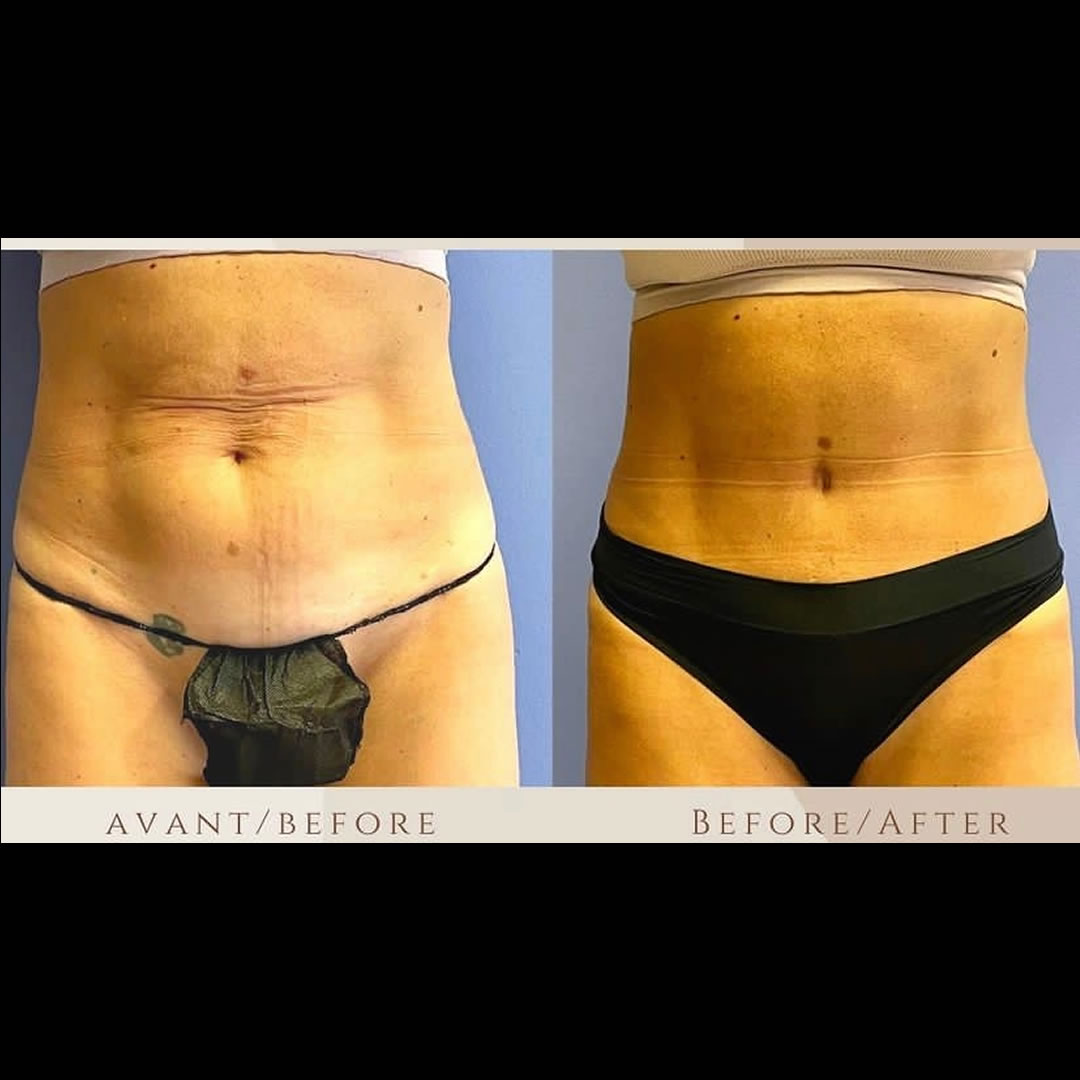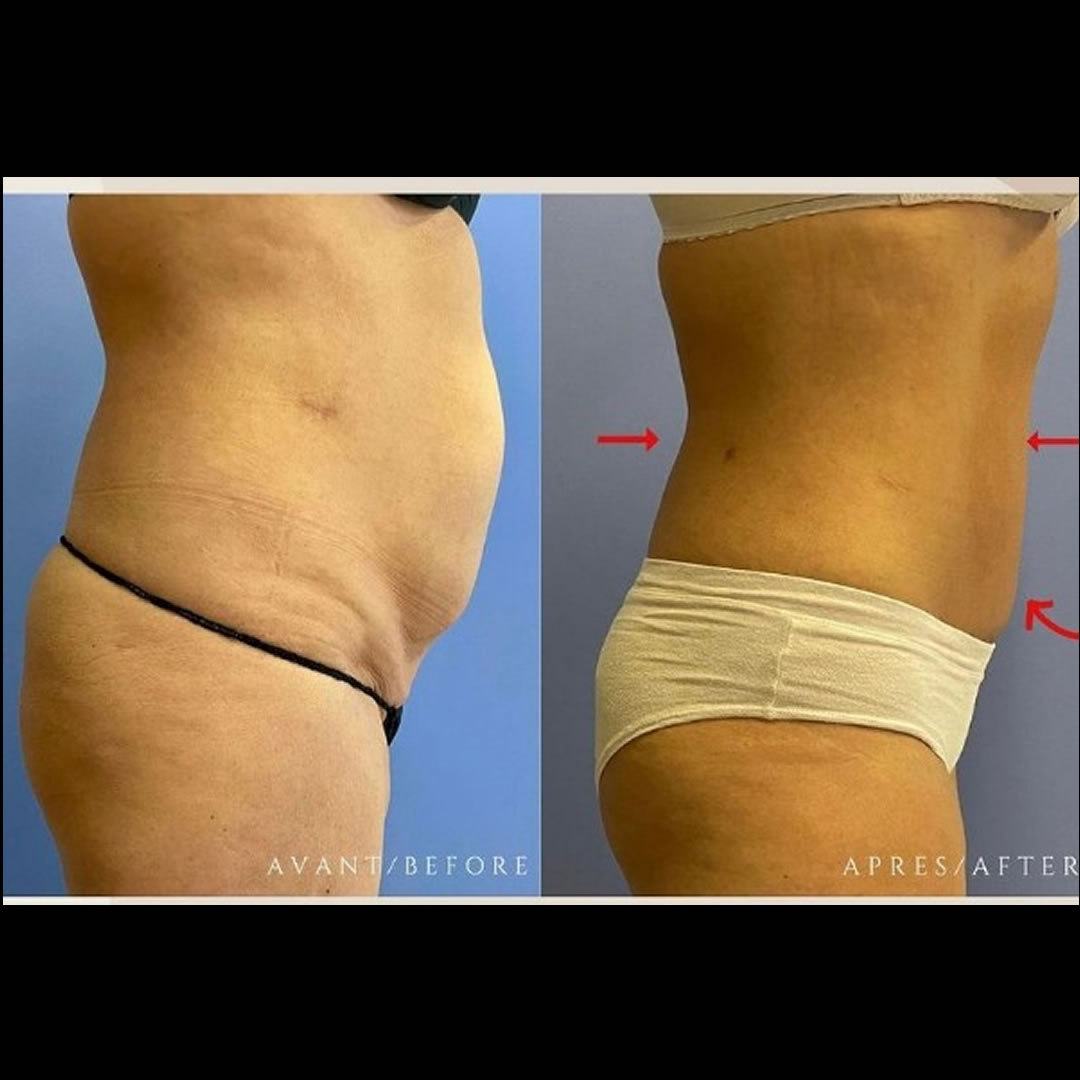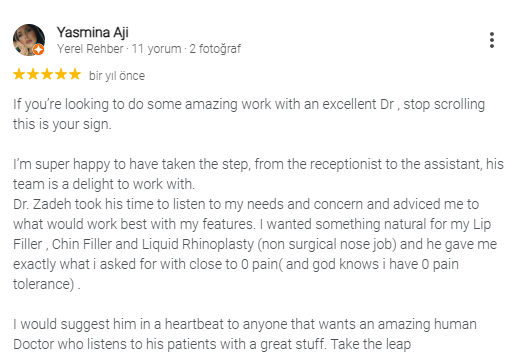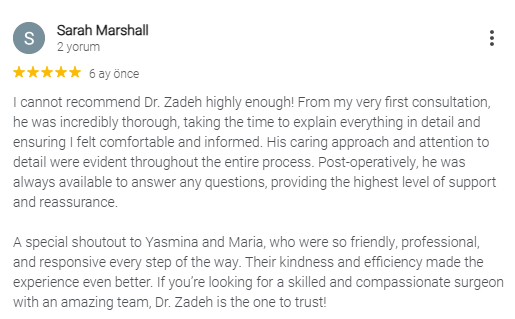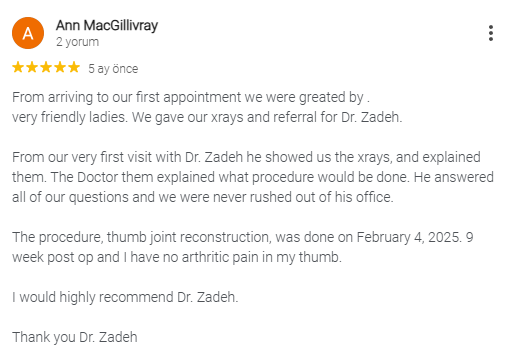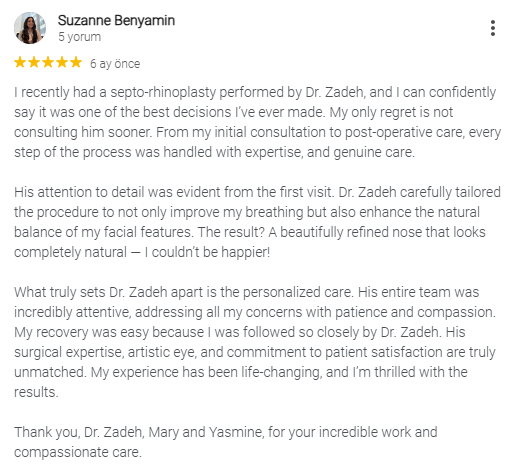Get a Free Consultation
WHAT IS A TUMMY TUCK?
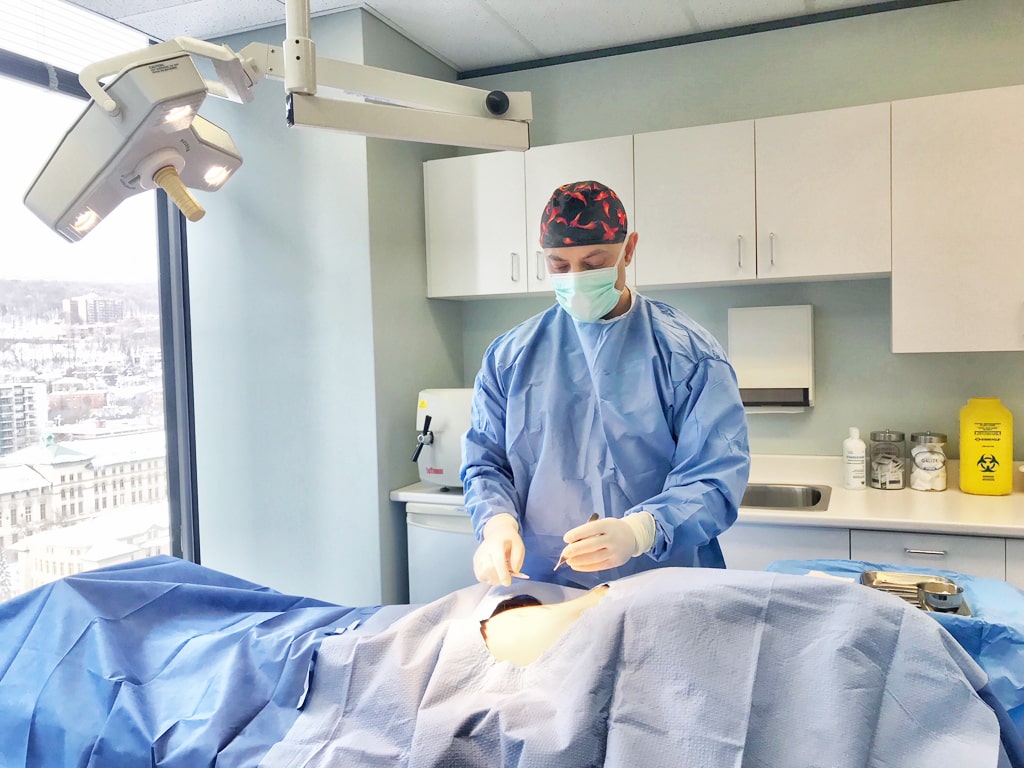
A tummy tuck, also known as abdominoplasty, is a surgical procedure in which excess fat and skin is removed and, frequently, weak or separated muscles are tightened and restored. This combination results in a smoother, firmer and more attractive figure, with the bulging fat, skin and tissue gone.
During a tummy tuck Montreal plastic surgeon, Dr. Zadeh, will place the incision as low as possible so that a bikini bottom or underwear can effectively hide the scar. Natural hills and valleys are created so that results appear natural and organic. The belly button will be repositioned if necessary so as to create the most pleasing outcome possible.
What are the benefits of a tummy tuck?
- Tightened stomach muscles
- Smoother, firmer skin
- Reduction in excess fat, skin, and tissue
- Improved satisfaction with one’s image
- Increase in clothing options
- Well-hidden scars
- Natural-looking results
What are the risks involved with tummy tuck surgery?
All surgeries have some risk. It is important that your tummy tuck is performed under the most stringent safety protocols, and by a highly skilled and experienced plastic surgeon. Dr. Zadeh is regarded as being one of the most talented plastic surgeons practicing in Montreal. He is double board-certified, and has established a state-of-the-art clinic, equipped with the most advanced technology and patient safety features.
Who Makes a Good Candidate For a Tummy Tuck?
If you are living with a tummy bulge, sagging skin, stretch marks, or your abdomen has lost its firm, youthful and fit appearance, you are likely a good candidate for a tummy tuck, regardless of your age or gender. To undergo this surgery, you should be at least 18, in good general health, a non-smoker, and not have a medical condition or illness that could put you at risk. It is fine to have children after a tummy tuck, but pregnancy will stretch the skin and muscles, so you may require a revision if your results were affected. It’s important to bear in mind that a tummy tuck is not a weight loss procedure, but rather a highly effective method of removing the fat lingering on your abdomen. All clients should have realistic expectations for what the surgery can and cannot accomplish.
How is the tummy tuck procedure performed?
For our patients in Montreal tummy tucks may be performed on an out-patient basis, a general, rather than local anesthesia will most commonly be administered. This ensures that the abdominal muscles remain completely relaxed during the procedure. The size and location of the incision depends on the type of tummy tuck that will be performed. Rest assured that Dr. Zadeh will use an incision that will produce the least visible scarring possible. After the skin and abdominal wall are separated from each other, the muscles are then repaired so the underlying structure is tighter, and in a more youthful position. After the excess skin is excised, it is then re-draped over the muscles and sutured. The navel will be positioned, so it appears where it should after the changes in tissue and muscle. Whether it is reattached or sculpted will be determined by Dr. Zadeh , whose intention is always to provide the most appealing outcome.
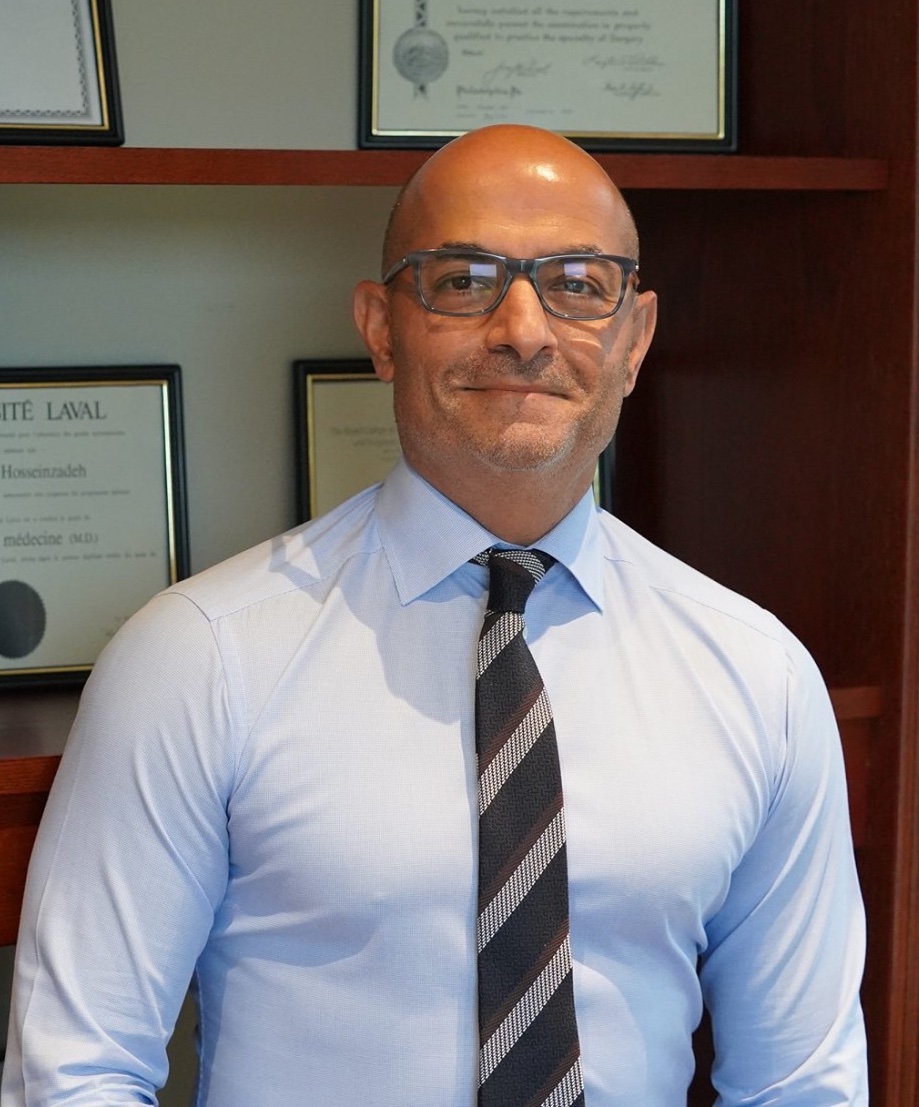
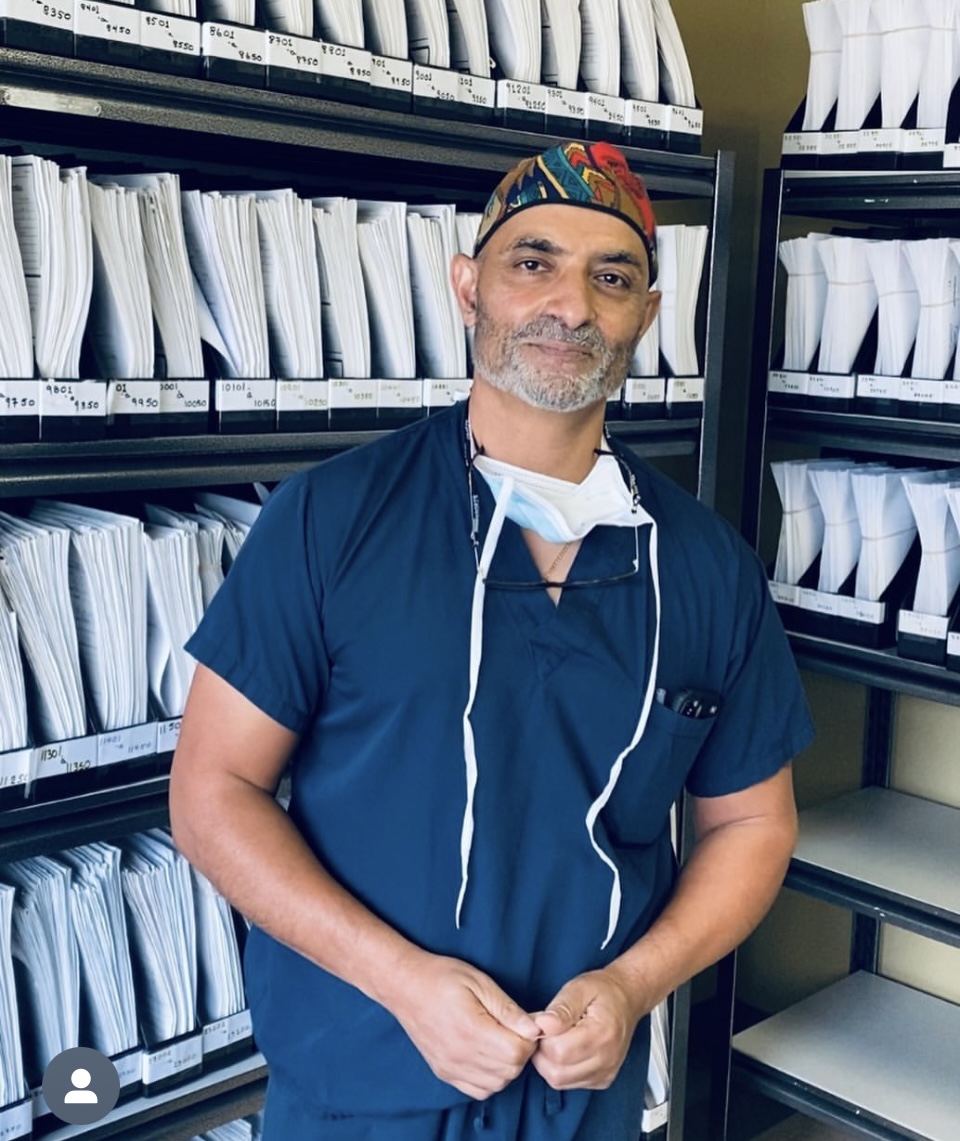

LEAVE YOUR NUMBER, WE WILL CONTACT YOU.

A clinic that lives up to your expectations!
Dr. Zadeh is attentive to the needs of each patient. He performs a thorough examination in order to apply his expertise regarding the best treatments and procedures to achieve the desired result.
Our dedicated staff is courteous and very welcoming. You’ll benefit from our professional environment where the client experience is at the heart of the clinic’s mission.
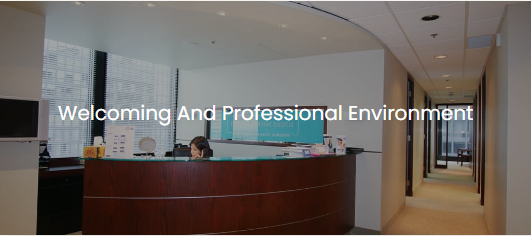

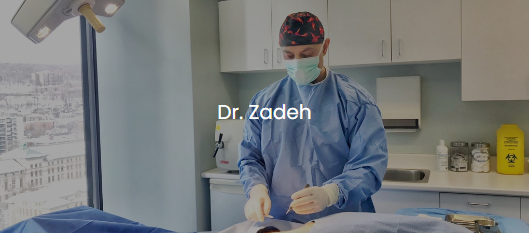
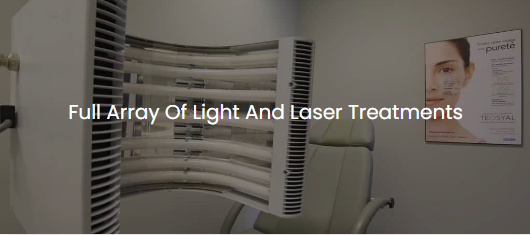
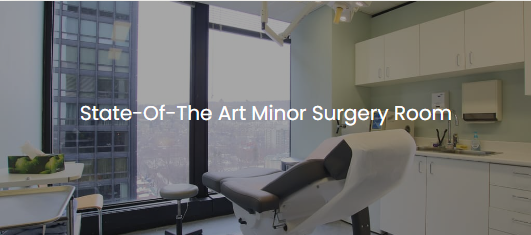
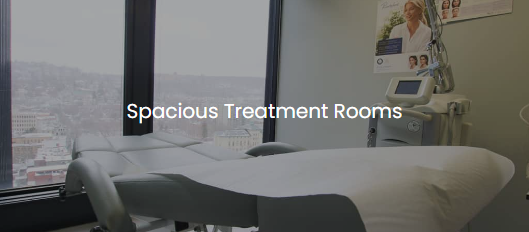
RECOVERY TIMELINE

Week 1

Week 2

Week 3

Weeks 4

Weeks 5-6

Months 3-12
Scars continue to mature and fade. Your final tummy tuck results continue to refine during this period.
FAQ
Answers to Frequently Asked Questions About Tummy Tuck Below
Who is a good candidate for an abdominoplasty?
The ideal patient for this procedure is in good general health, physically fit and at a healthy body weight (or has reached a stable weight after significant weight loss). Candidates for tummy tuck often perceive that their abdomen is too prominent in comparison with his or her silhouette. Certain people may also be embarrassed by their physical appearance. The most common causes of this include:
- Aging
Heredity
Pregnancy
Prior surgery
Fluctuations in weight
What tummy tuck surgery cannot do ?
A tummy tuck is not a substitute for weight loss or an appropriate exercise program. Although the results of a tummy tuck are technically permanent, the positive outcome can be greatly diminished by significant fluctuations in your weight. For this reason, individuals who are planning substantial weight loss or women who may be considering future pregnancies would be advised to postpone a tummy tuck. A tummy tuck cannot correct stretch marks, although these may be removed or somewhat improved if they are located on the areas of excess skin that will be excised.
Does the RAMQ cover this procedure ?
An abdominoplasty is considered to be a cosmetic procedure and is not reimbursed by the RAMQ.
What are the potential complications?
In healthy patients, a tummy tuck is safe and causes little complications. The following is a list of possible complications immediately following the procedure and over the long term.
Bleeding
After any surgical procedure, there is normally some bleeding at the site of the wound. Such bleeding should slow over time and stop altogether after a few days. If, however, there is extensive bleeding that cannot be stopped by applying pressure, another surgical procedure would be required.
Seroma
An excessive amount of the fluids that are normally produced by the body may accumulate inside the wound. This is not dangerous, but the fluids may need to be drained with a syringe on one or more occasions.
Infection
An infection can sometimes occur despite using sterile methods and taking antibiotics before surgery. Depending on the severity of the infection, oral or intravenous antibiotics may be required. If an abscess (an accumulation of pus) develops, it will need to be drained by opening the affected area of the skin or by using a drainage tube.
Wound dehiscence
Wound dehiscence refers to a complete or partial opening of the wound that is not healing well. This can be caused by an infection, a pocket of blood or seroma, or by insufficient blood flow. Dehiscence is usually treated conservatively, that is, either by applying dressings and wound management, or through surgery to close the wound again.
Necrosis of the skin
Necrosis of the skin is a rare complication where a portion of the skin does not receive enough blood to heal properly. Skin that is affected by necrosis can be treated by applying dressings and wound management or may require surgery to close the wound again. Patients who smoke are at greater risk.
Necrosis of the adipose tissue
Fat necrosis is characterized by a flow of liquified fat which can last several weeks. This condition is caused by insufficient blood flow to the adipose tissue and is more frequent in patients who smoke or are obese.
Phlebitis
Phlebitis, which is rare, is an inflammation that can occur in the deep veins of the legs. Blood-thinning medication and compression stockings may be prescribed to prevent/treat this condition. The best form of prevention is moving around as soon as possible after the surgery, because contracting the calf muscles greatly improves blood flow in the legs.
Scarring
The scar will change gradually for up to two years before reaching its final appearance. It may become pigmented, raised, painful or sensitive to touch. Depending on how the scar evolves, Dr Zadeh will suggest treatments such as silicone, gel application, cortisone injections, microneedling,light therapy, to improve the scar’s appearance.
How can I control pain at home?
Dr. Zadeh will be giving you prior to the surgery, a prescription for pain medication to take home with you. That way, the medication will be at your disposal once you arrive home from the surgery.
Note: Make sure Dr. Zadeh knows about pain medications that have caused you problems in the past.
How long is the recovery period? Are there any restrictions in terms of activities ?
Postoperative dressings must remain intact and dry for approximately one week. You may shower once the dressings and drainage tubes have been removed. You must avoid any intense physical exercise during the first six weeks following your surgery in order to give your body a chance to heal comfortably. For the same reason, it is recommended that you sleep with a pillow under your knees. However, it is important to get out of bed and walk regularly in order to activate blood flow in the legs and avoid thrombophlebitis. You will need to wear an abdominal support belt for a minimum of one month in order for the tissue to heal properly.
You can resume your normal physical activities three to six weeks after your surgery. It is important for you to listen to your body. It will tell you if you are ready to exercise and how much exercise you can handle. Pain or discomfort when exercising is a sign that your body is not quite healed and that it would be better to wait a few more days before trying again.
How much does the surgery cost ?
Generally the cost of an abdominoplasty starts at $9,700. Additional charges may apply if the patient has a particular condition or if different surgeries are combined.The final cost of your treatment will be calculated on an individual basis in accordance with your needs.
Get Free Consultation

Our Address
1 Westmount Square, Suite 1200, Montreal, QC H3Z 2P9
Contact Us
+1 438 809 0389
contact@drtzadeh.com

